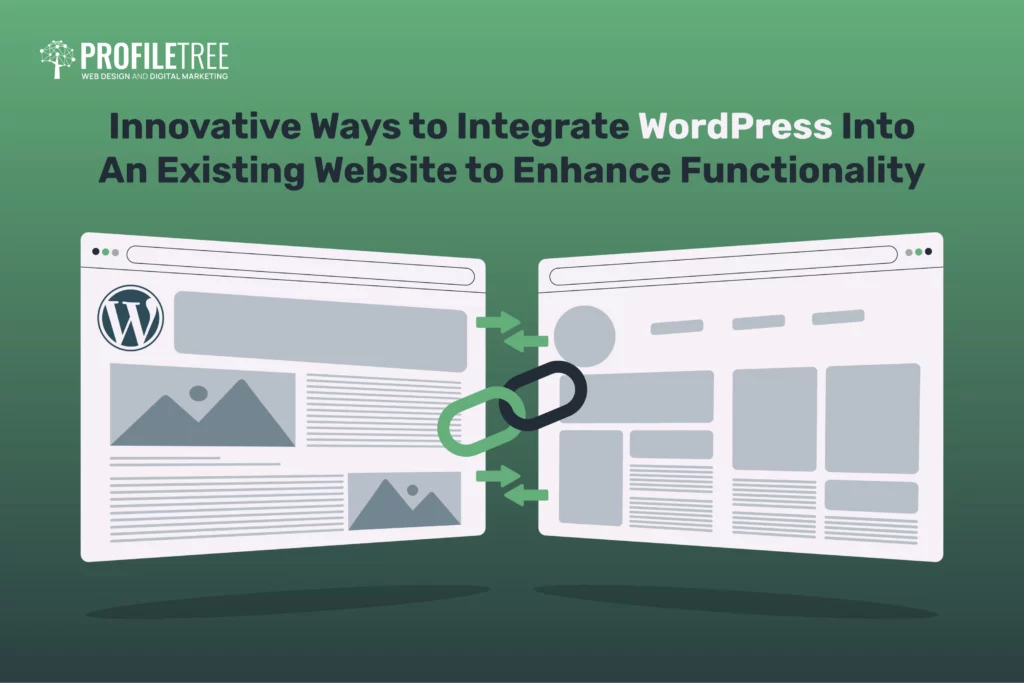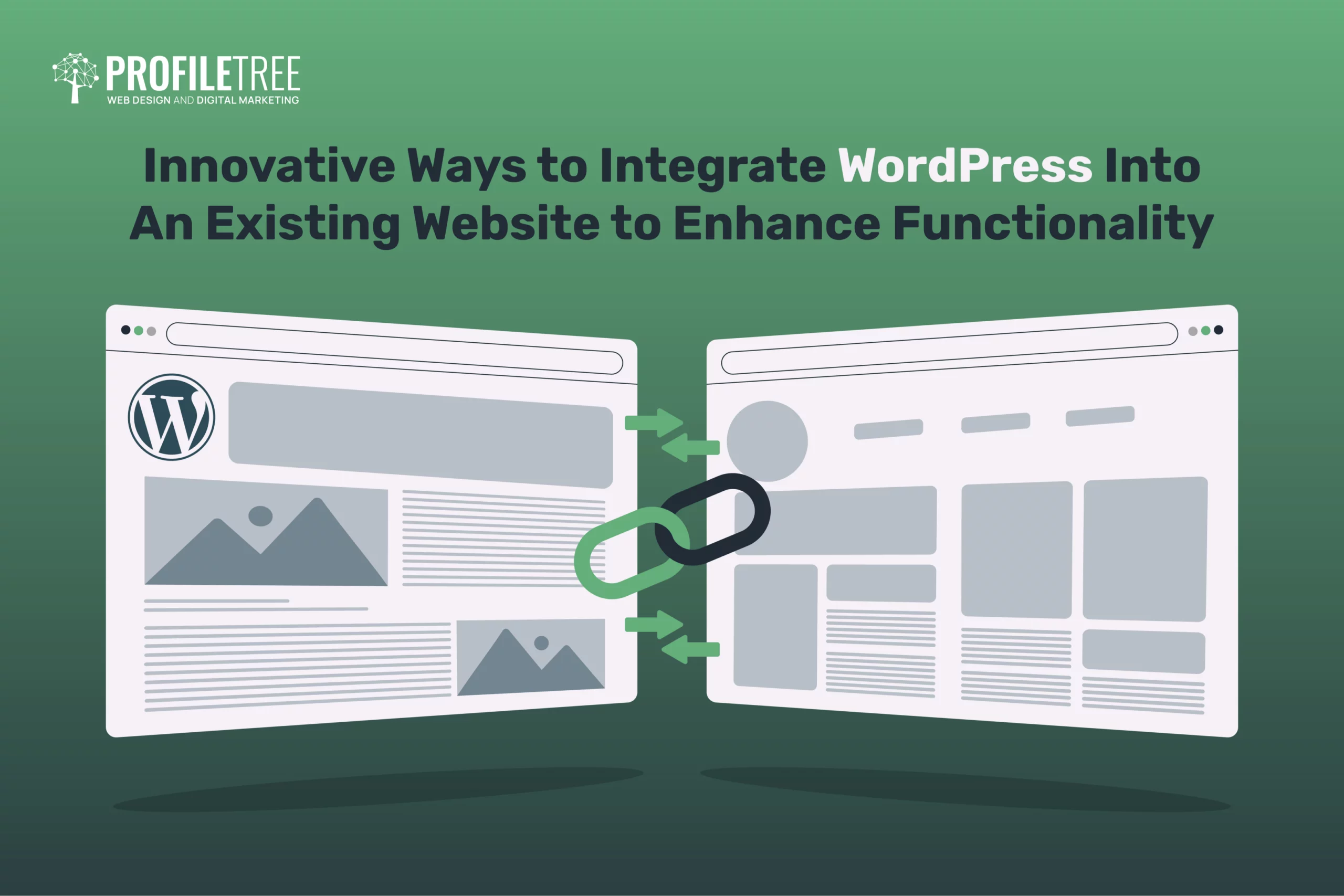As the digital landscape evolves, website owners often find themselves seeking new ways to enhance their online presence and improve user experience. WordPress is a well-known content management system (CMS), also known as WP, used for different functionalities, especially blog creation and building a website or even an online store.
If you already have an existing website, you may want to integrate WordPress into your site to add a blog or other features. WordPress offers a wide range of powerful tools and functionalities that can elevate your website to new heights.
Today, we aim to explore the benefits of integrating WordPress into an already existing website and provide a step-by-step guide to help you seamlessly incorporate it into your current setup.
Benefits of Integrating WordPress
There are some tremendous benefits to adding WordPress to an existing website. For example, if you have a static website, adding WordPress can allow you to add a blog or other dynamic content. If you have an e-commerce website, adding WordPress can allow you to add a blog or other content that can help you attract more customers. Overall, adding WordPress to an existing website is a great way to improve your website and make it more effective.

Enhanced Content Management
WP has garnered widespread acclaim for its intuitive and user-friendly interface, empowering website owners to manage and update content with remarkable ease. Its robust CMS capabilities enable effortless creation, editing, and organisation of web pages, ensuring a seamless web development experience. The familiar WordPress dashboard fosters consistency in website aesthetics while granting access to advanced content management features.

Extensive Plugin Ecosystem
One of the key advantages of WordPress is its vast plugin ecosystem. Plugins are essential for you to extend the functionality of your website by incorporating features such as contact forms, social media integration, search engine optimisation, e-commerce capabilities, and much more. By integrating WP, you gain access to thousands of plugins that can help you customise your website to meet your specific target.
Responsive Design and Mobile Optimisation
In today’s mobile-driven world, having a responsive website is crucial. WP offers numerous themes and templates that are designed to be mobile-friendly, ensuring a seamless user experience across different devices. By integrating WordPress, you can leverage these responsive design options and optimise your website for mobile users.
SEO-Friendly Structure
WordPress is inherently structured to be search engine friendly. It generates clean and well-structured code, provides customisable permalinks, and offers various SEO plugins to optimise your website for search engines. By integrating WP, you can improve your website’s visibility and organic search rankings, attracting more visitors and potential customers.
The Methods of Integration
Enriching your existing website with WP can be accomplished through two primary methods: subdomain integration and subfolder integration. The choice between these approaches hinges on your specific preferences and the existing structure of your website.
Selecting the appropriate integration method depends on your specific website setup and preferences. Subdomain integration provides a distinct URL for your WordPress content, while subfolder integration seamlessly blends your WordPress content into your existing website structure. Consider these factors along with your technical expertise when making your decision.
Thus, here is a comprehensive guide detailing each method:
Subdomain Integration
When you integrate WP using a subdomain, you essentially create a separate website under your primary domain. For example, if your main website is example.com, you could install WordPress under the subdomain blog.example.com. This means your WordPress site will have a different URL than your main website.
Among the advantages of this integration is that it provides a clear separation between your WordPress site and your main website. This can be beneficial if you want your WP site to have a completely different look and feel from your main website or if you want to avoid potential conflicts between the two sites. This can also make managing easier, as you won’t have to worry about conflicts between the WordPress files and your main website.
However, the drawback of this approach is that our WordPress site will have a different URL from your main website. This can be seen as a disadvantage if you want all of your content to be under the same URL. Also, SEO experts believe that subdomain integration can have a negative effect on your website’s SEO. Yet, there needs to be a clear consensus on this issue.
Subfolder Integration
When you integrate WP using a subfolder, you install WordPress within a subfolder of your main website’s directory. For example, if your main website is hosted at www.example.com, you could install WordPress in the subfolder blog. This means that your WordPress site will have the same URL as your main website but will be accessible from a subfolder.
Unlike the subdomain integration, the perks of this method are having the exact URL for the WordPress site and the main website. SEO experts think that this approach positively impacts the SEO of your website. This is because it can help to establish a more vital link between your WordPress site and your main website.
On the other hand, the challenge that this approach comes with is being more difficult to manage. This is because you will need to be careful to avoid conflict with the files and databases for your main website. The occurrence of such disputes can lead to unwanted deterioration of your website’s functionality.
Step-by-Step Guide to Integrate WordPress into an Existing Website
The best method for integrating WordPress into your website depends on your preferences. If you want a separate and distinct website with its own URL, then subdomain integration is the better option. If you want your WP site to have the same URL as your main website and you are comfortable with the potential for conflicts, then subfolder integration is the better option.
No matter what approach you choose to integrate WordPress, here are the steps you need to learn about to go through the integration process:
Backup Your Website
Before embarking on the journey of integrating WP into your existing website, it is crucial to safeguard your current web presence by creating a comprehensive backup. This proactive measure serves as a safety net, ensuring that you have a reliable restoration point should any unforeseen complications arise during the integration process.
The process of creating a backup varies depending on your website hosting provider and the specific tools you utilise. However, the general principle still remains the same, which is capturing a complete copy of your website’s files, databases, and configurations.
Install WordPress
integrating WordPress into your existing website presents a unique opportunity to elevate your online presence and introduce dynamic content capabilities. Establishing a fresh WP installation within a subdirectory or subdomain is highly recommended to make sure a flawless transition takes place, maintaining the integrity of your current website.
Customise WordPress
Select a theme that harmonises with the design of your existing website and personalise it to ensure consistency. Additionally, you have the option to install plugins that provide desired functionalities, such as contact forms, social media integration, or analytics tools.
Integrate Navigation Menu
With WordPress seamlessly integrated into your existing website, the next step is ensuring a smooth and intuitive navigation experience for your visitors. This involves incorporating links to the newly added WP pages within your website’s navigation menu.
A well-structured navigation menu serves as a roadmap, guiding visitors through your website’s content. By carefully integrating WP pages into this menu, you ensure that users can effortlessly discover and explore both your existing website and the fresh content powered by WordPress.
Set Up Redirects
URL redirects serve as virtual bridges that seamlessly guide visitors from outdated or no-longer-present URLs to their corresponding updated or relocated counterparts. They play a critical role in maintaining a cohesive website structure and preventing the dreaded “404 Not Found” error, which can signal to search engines and users that your website is outdated or broken.
Broken links disrupt the user experience. Thus, implementing URL redirects ensures that any links pointing to your old URLs are automatically forwarded to the corresponding WP pages, supporting a seamless navigation experience and preventing search engines from penalising your website.
Test and Optimise
Conduct comprehensive testing of your integrated WordPress website to verify the correct functioning of all features. Enhance your WP installation’s performance, security, and search engine optimisation by employing caching plugins, security plugins, and SEO plugins.
Launch and Monitor
Once you are content with the integration, it is time to launch your newly integrated website officially. Monitor its performance, user engagement, and any possible issues that may surface. It is crucial to regularly update WordPress, themes, and plugins to maintain optimal security and functionality.
Incorporating WordPress into an already established website can greatly amplify its functionality, user experience, and online visibility. It is essential to follow a detailed guide, create backups of your website, and conduct thorough testing to guarantee a smooth integration process. With WordPress driving your website, you will benefit from a robust and versatile platform that empowers your online presence effortlessly.


